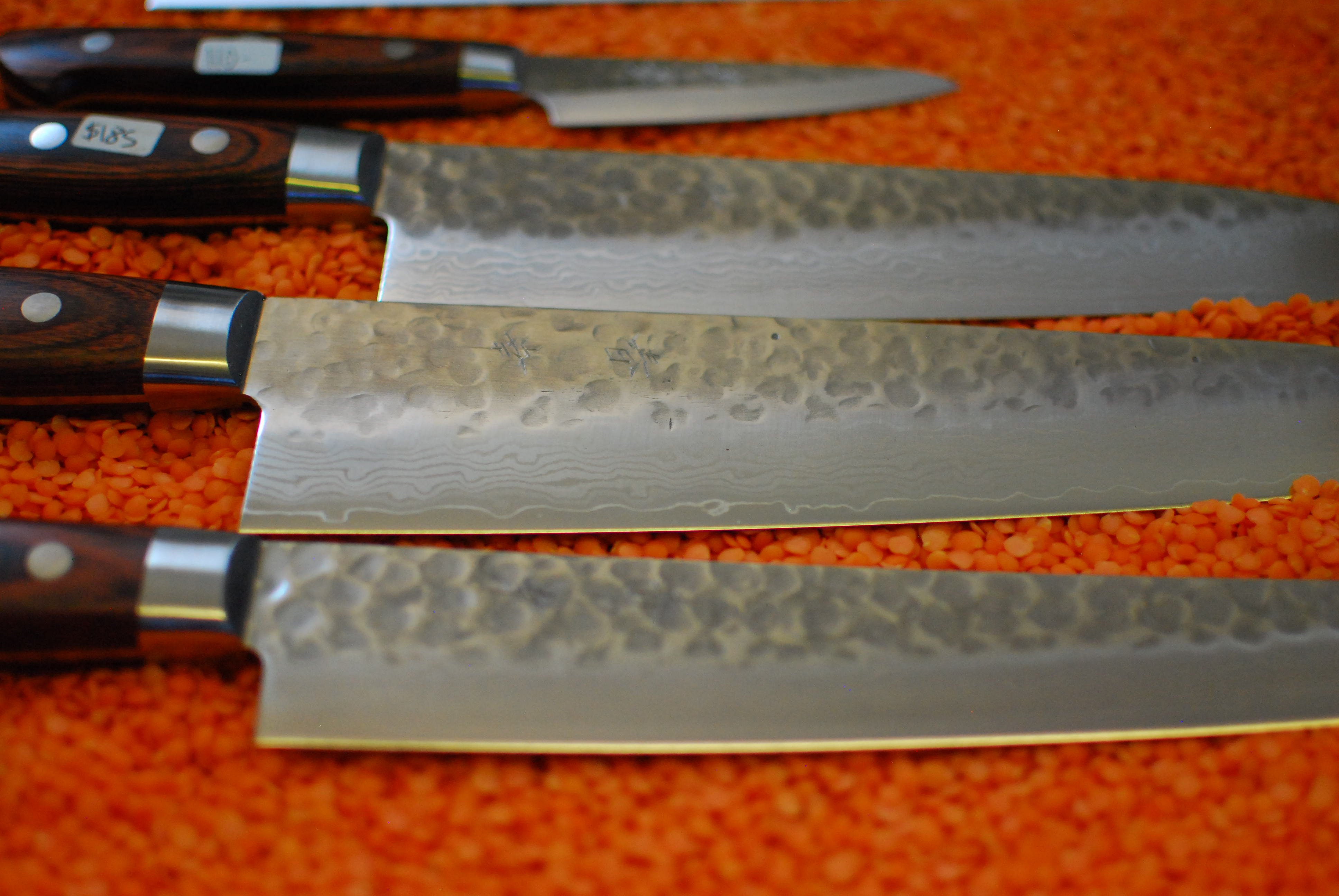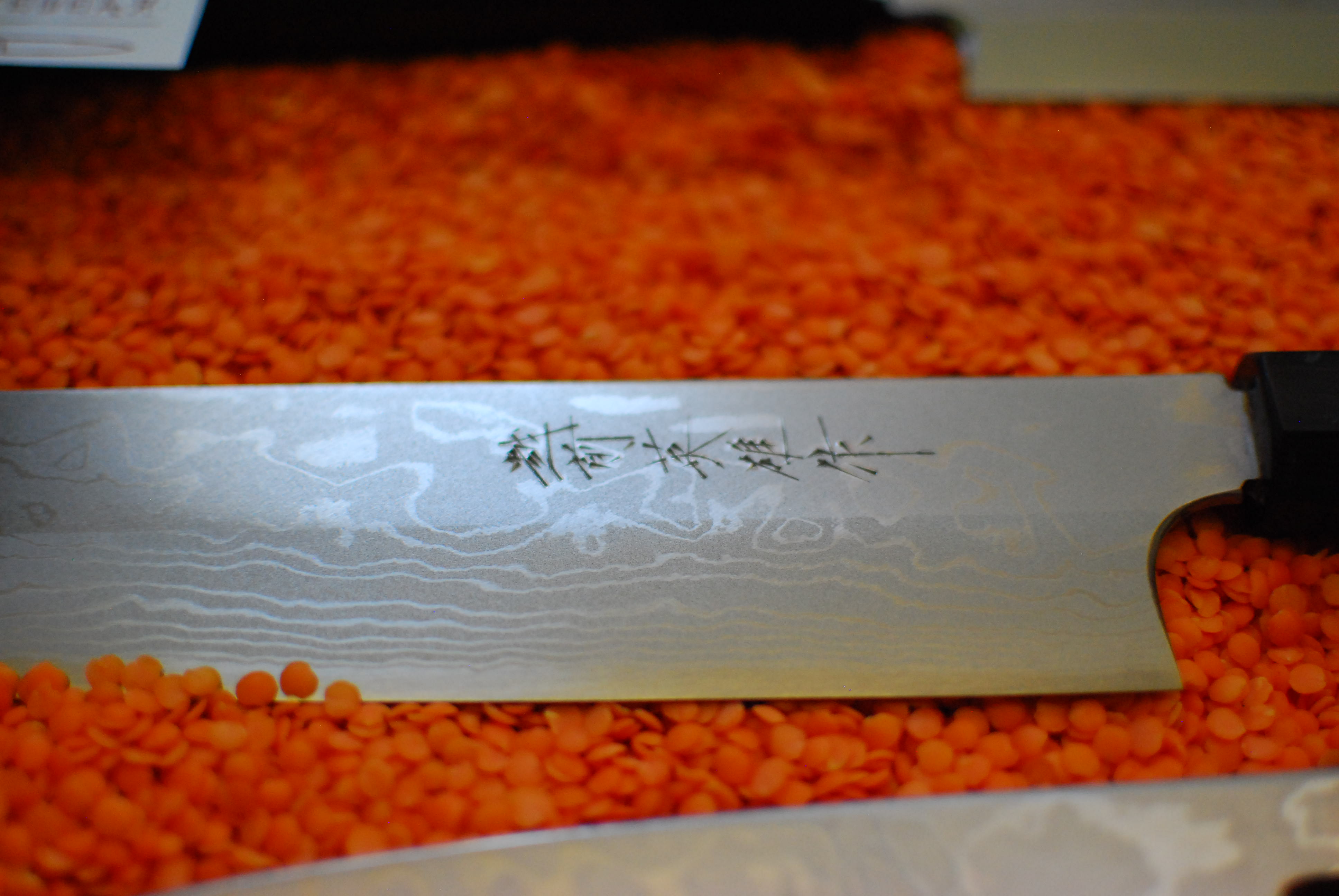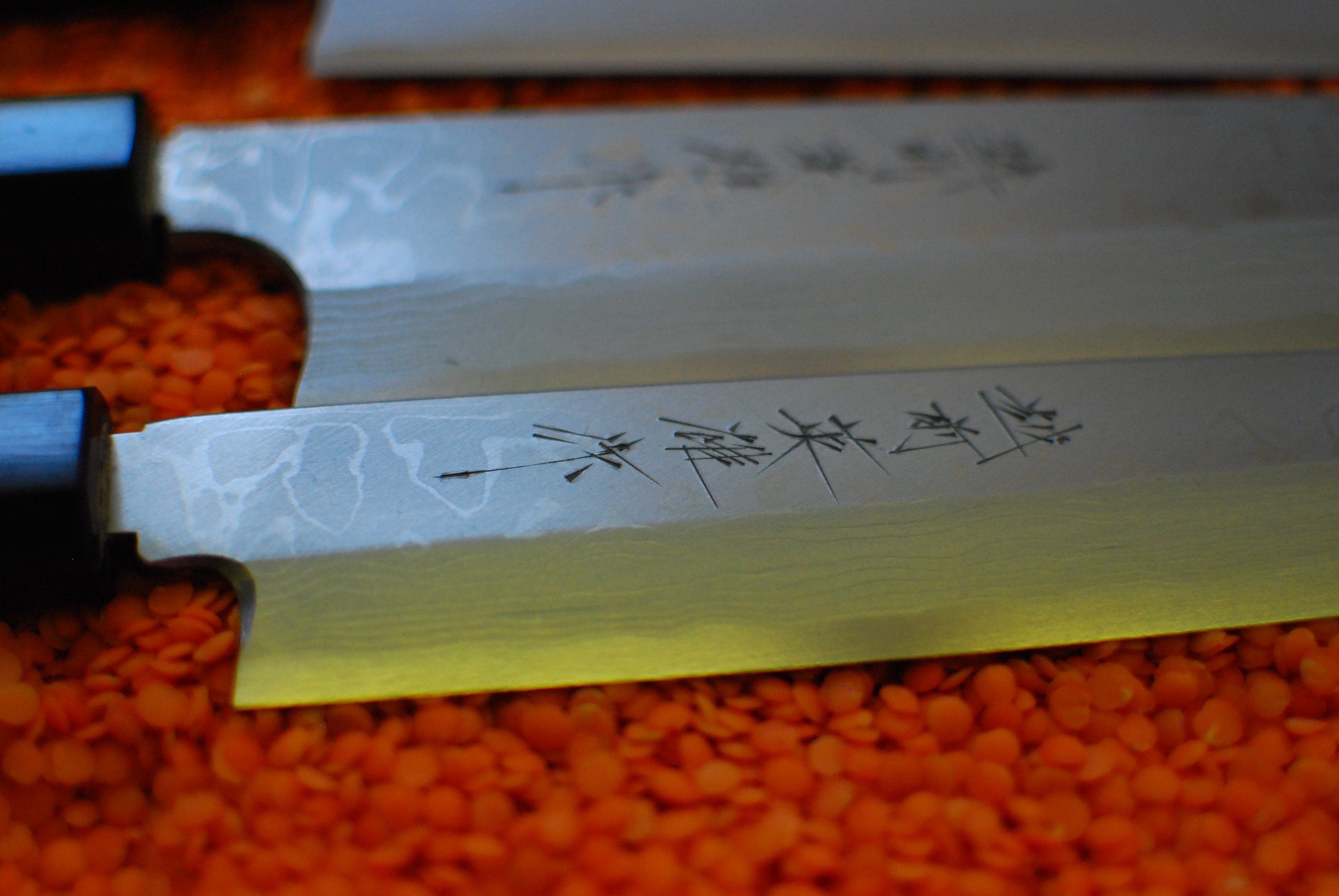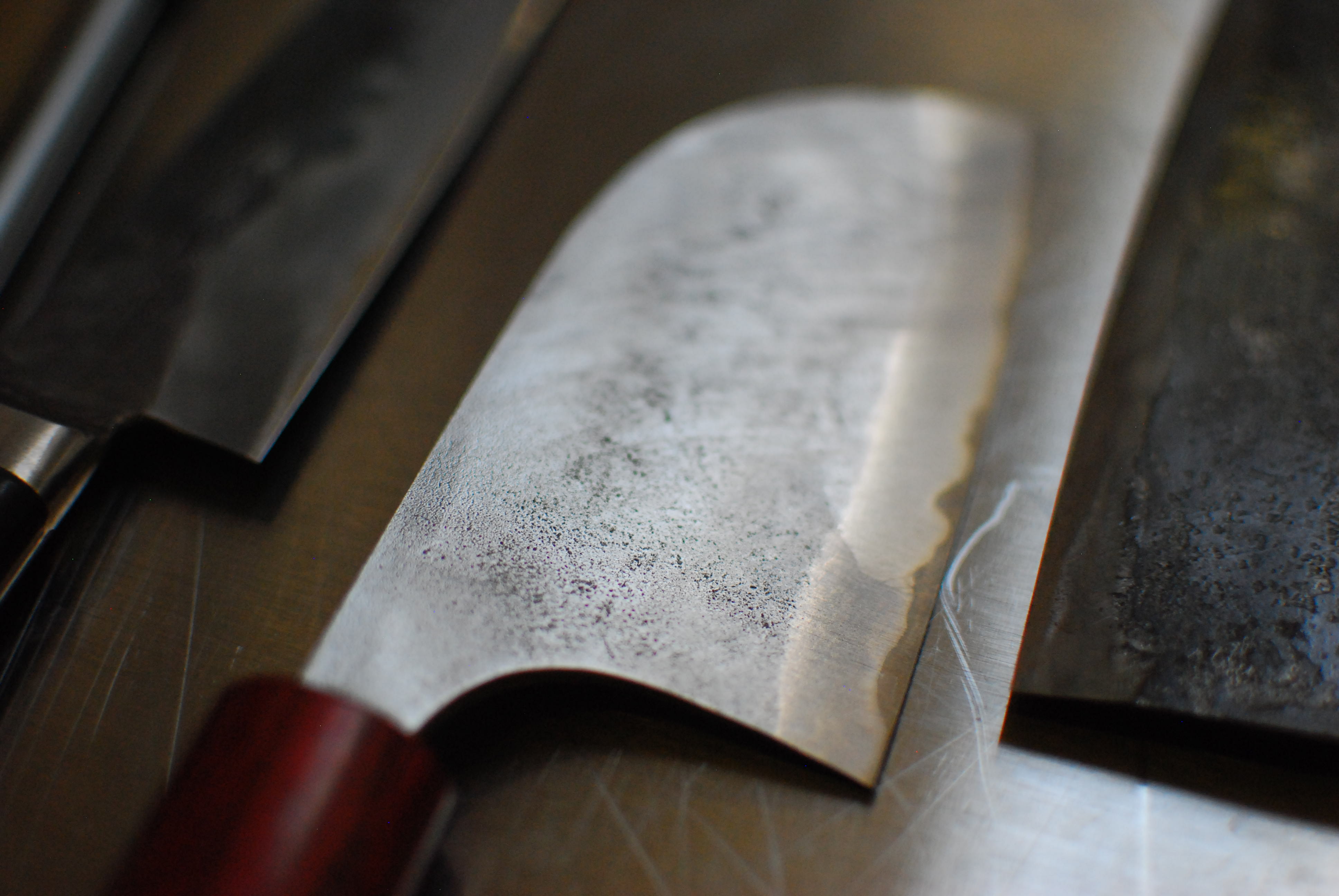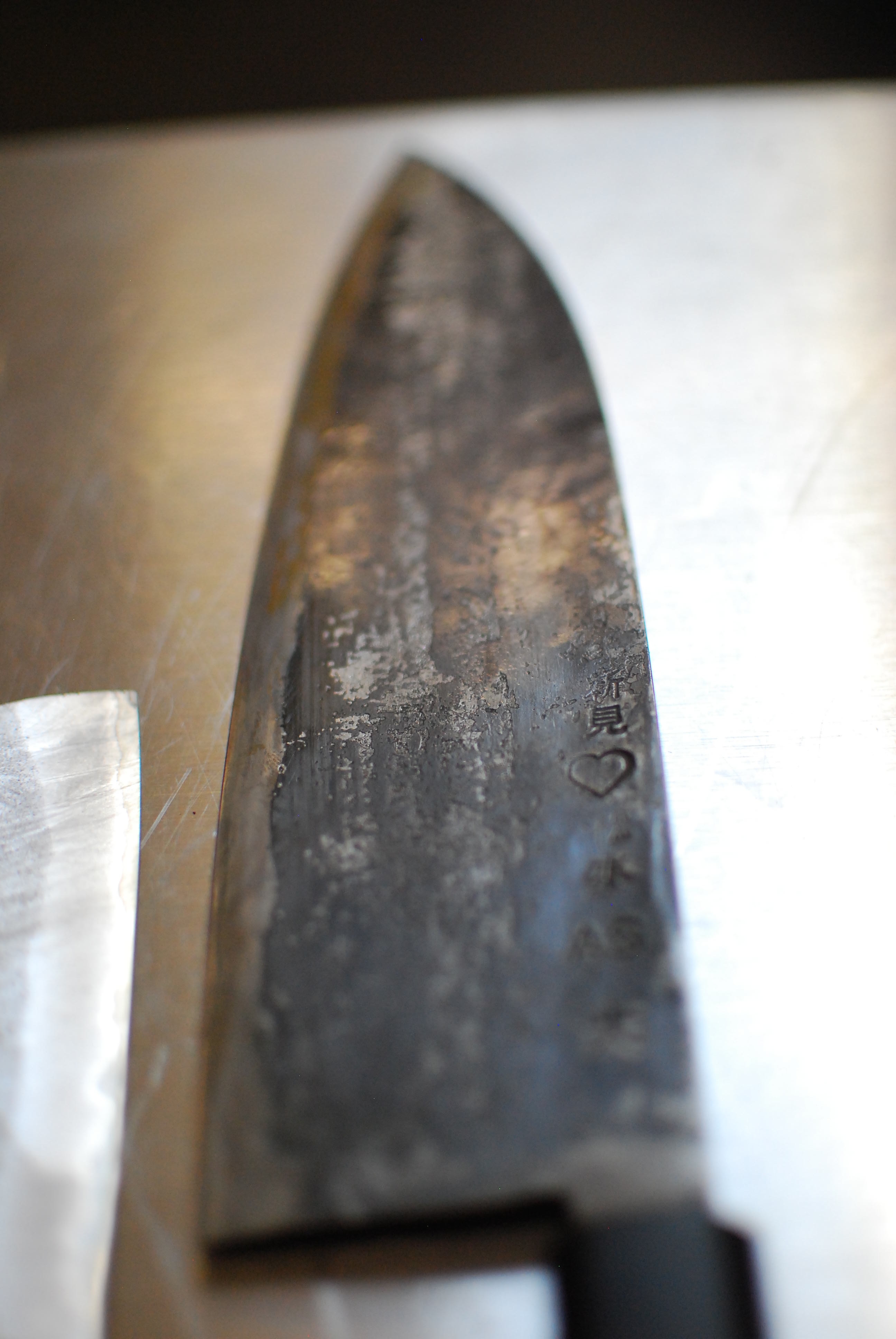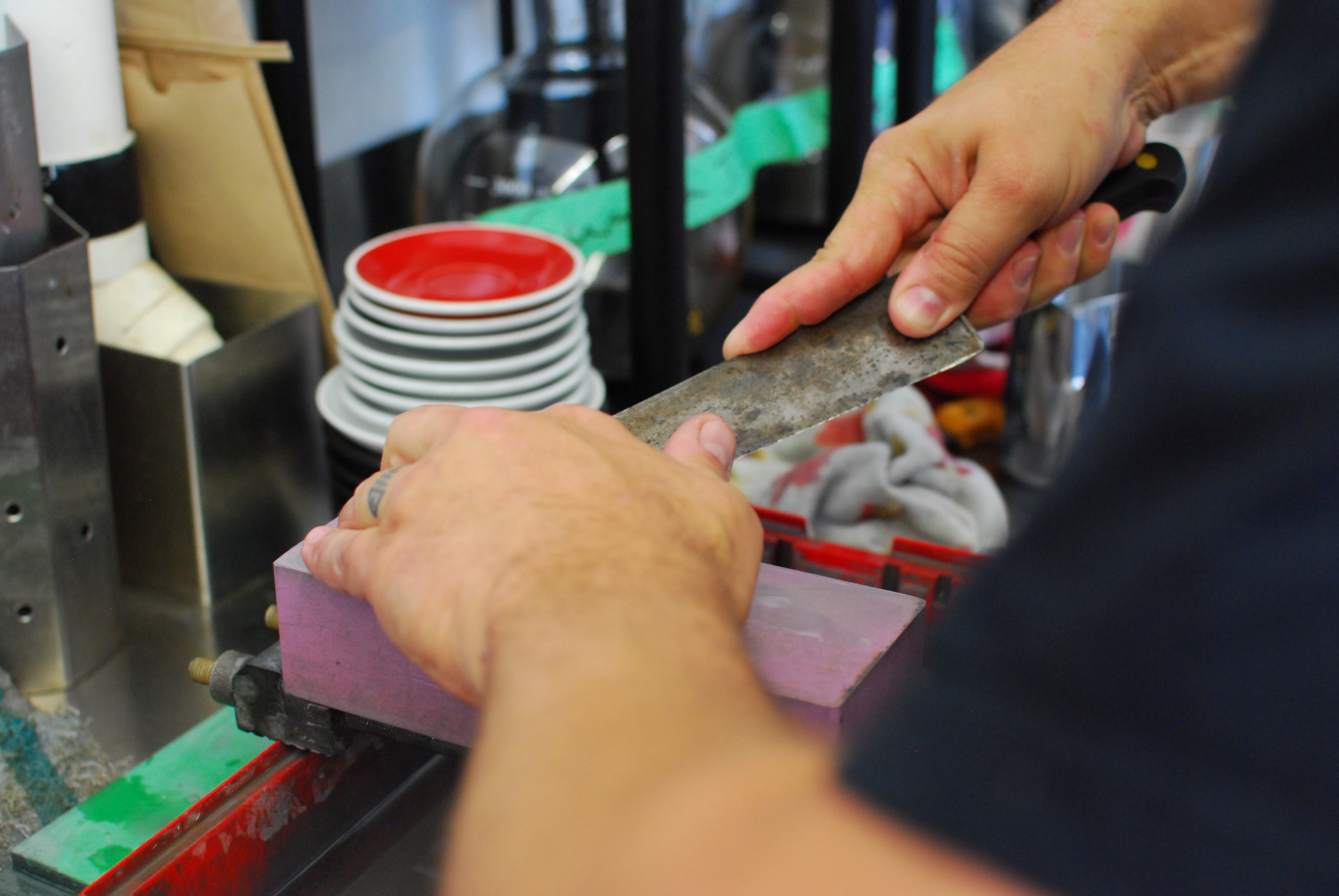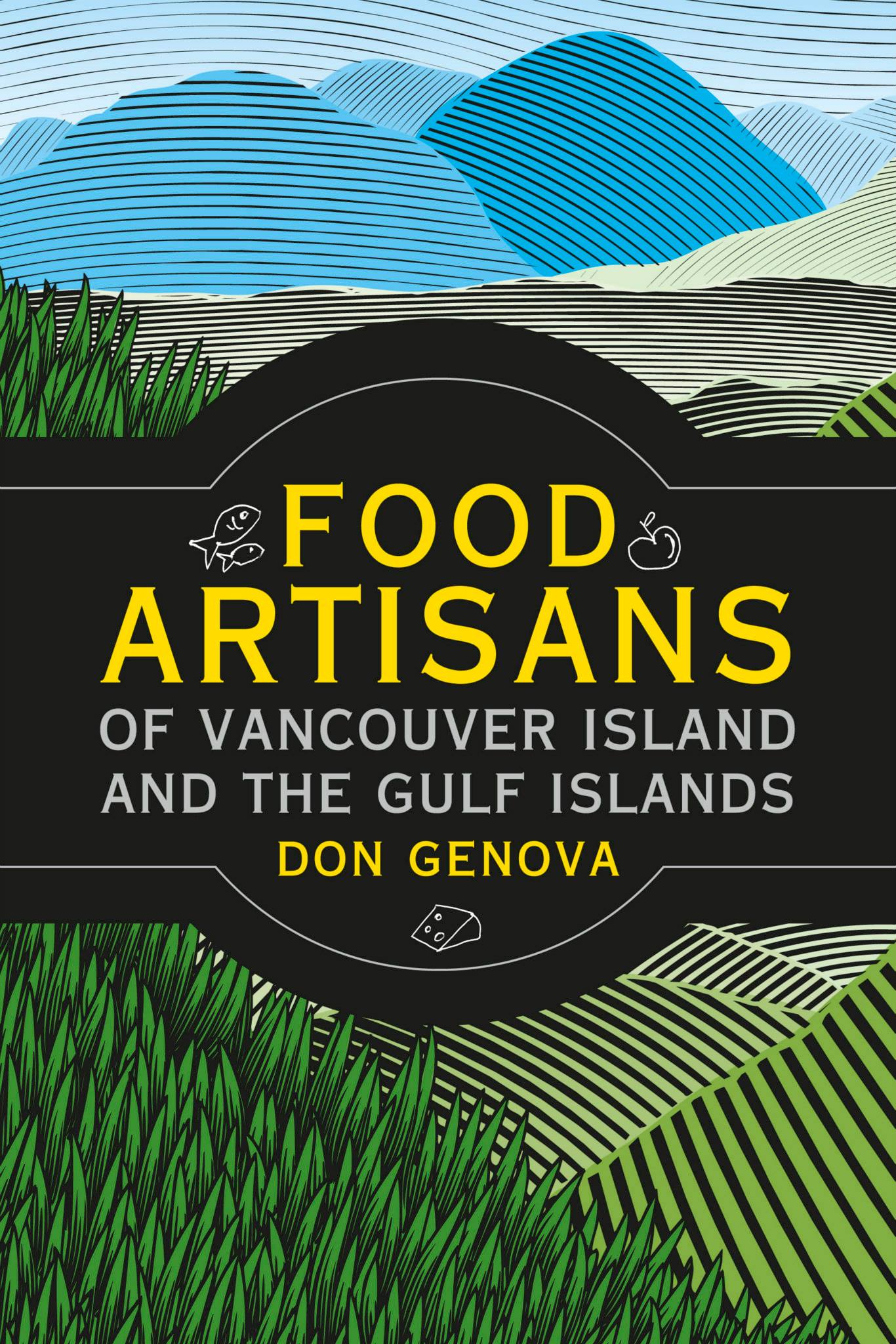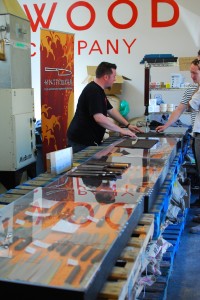
Knifewear Pop-up store at Fernwood Coffee
The cooking scene in Victoria just got a little bit sharper. Yesterday (July 30th) a pop-up version of a Canadian kitchen knife retailer opened in the Fernwood Coffee roasting room to give knife aficionados here on the Island a chance to look at, feel, try and perhaps buy a new slicer for their kitchens. I told Stephen Smart all about it today on this week’s edition of Food Matters on CBC Radio’s All Points West.
I have around 8 knives in my kitchen that I use on a regular basis. Some are special use, for paring, boning, and bread. Then I rotate around four as my regular chef knives that I use mostly for cutting vegetables. They are a mix of Japanese and European knives and it’s safe to say I am very particular about having good, sharp knives to use in the kitchen, but I’m always looking for something special.
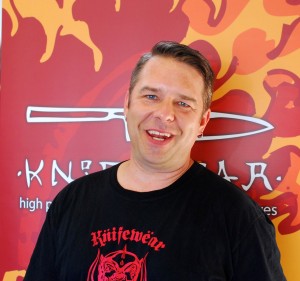
Kevin Kent, Knifewear Owner
The pop-up shop I visited yesterday in Fernwood is a travelling road show of handmade Japanese knives put together by Kevin Kent and his team of employees at Knifewear. This is a company that started in Calgary and also has shops in Kelowna, Edmonton, and Ottawa. I first walked into a Knifewear shop in Ottawa earlier this year and was really impressed with the selection and the knowledge of the staff. But when I met Kevin in person yesterday I wanted to know how he came to start the business. It all started when he was working as a chef in London, England: “I bought a Japanese knife one day when I was at a chef’s convention and all of a sudden I had one of those ‘light goes off-bing’ in my head that ‘ah, that’s what a knife is supposed to work like’. So then I replaced all my knives with Japanese. When I moved back to Calgary I just couldn’t find anything in all of Canada that was any good, so I thought I would import a few Japanese knives, sell them to chefs, be able to buy more of my own and then open my own restaurant, which is what I always wanted to do. Now here I am years later with five knife shops and I’m not cooking anymore!”
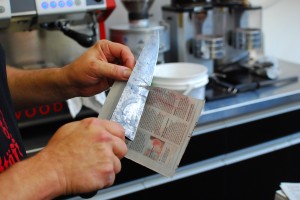
My sharpened Sabatier slicing through newspaper
Kevin doesn’t dismiss all non-Japanese knives. I brought him an old European knife that was given to me by my brother-in-law who thought it might be special and it is. It’s a Sabatier, one of the finest European knife manufacturers. it is made entirely of carbon steel, not stainless, so it looks kind of ugly because of the patina it has developed, but Kevin was excited to see it and gave it a good sharpening for me. Still, Japanese are his favourites for a reason: “Japanese knives are made out of harder steel, and harder steel makes a sharper edge and it will stay sharper for longer. Do they cost more? Yes and no. I have knives in the shops that start around $60. Then they go up from there, and yes, some of them can cost a couple of mortgage payments. The cost can vary because certain types of steel cost more, and you also have to think about how the knives are made. Some of the knives start out by having machinery flatten them, and then you also get blacksmiths making knives, so someone like Kato San who is over 70 years old and starts off a knife with a hammer, steel and a fire, well, they cost a bit more.”
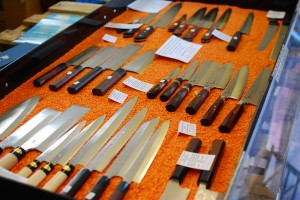
Decisions, decisions!
But if you are making a mortgage payment-sized investment, here are some factors to consider: Kevin says always go to a shop where you can test the knife. Get a feel for it. Check the balance, the weight, how it feels in your hand. What do you want to use it for? While I was there yesterday Rebecca Teskey was there, she’s the co-owner of the Village Butcher in Oak Bay. She already has one knife she got from Knifewear but was there looking for another, and there’s a big difference for her in the kind of knife she might use at home, and the kind of knife she might use while she’s cutting up chickens at the Village Butcher, so the Knifewear employees were helping her make her decisions based on the way the knife is ultimately going to be used.
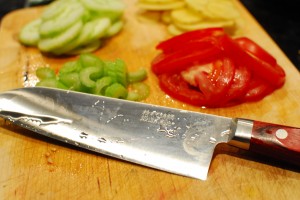
My new knife at work!
I purchased a Takamura chef’s knife, 7-inch blade, made of powder steel. It took Kevin a year to track down Takamura-san after seeing his knives displayed at a train station in Japan, and now he’s a major fan. Nothing really fancy, but glides through food and apparently doesn’t have to be babied as much as some powder steel blades. I did not spend a mortgage payment on this but it did check in at $250. However, as Kevin says, if you properly care for your knife, it should last a lifetime: “Everything here will last, if you take care of it. Don’t put it in the dishwasher. Use it on a cutting board, and by that I mean a wooden cutting board, have it sharpened now and again, and it should last you a lifetime, or lifetimes. My son and daughter are going to inherit some really nice knives. As a chef, I retired one or two knives, because I was sharpening them every week, using them 10 hours a day, but now, they only get sharpened once every eight months or so, they last a lot longer.”
Why are we paying so much more attention to knives now? It’s like so many things in the world of food and wine. Food media, especially good food magazines and some television shows, are getting us back into cooking, and are willing to go into a lot of detail on different ways for us to spend our disposable income. It’s why we bother to learn the difference between local and imported foods, craft beers and industrial beers, for example, and support all those farmers’ markets that have sprung up over the past few years.
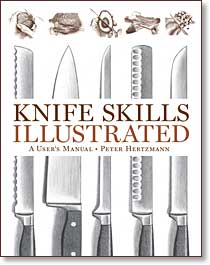
Knife Skills Illustrated, by Peter Hertzmann
A few more notes: Knifewear is only open at Fernwood Coffee until Sunday, August 3rd, after that you’ll have to do mail order. I came across a great book last week at a used bookstore called Knife Skills Illustrated, by Peter Hertzmann, and shows you in drawings all the different ways to cut various things up when you’re cooking, advice on knives and cutting boards, and all the instructions are doubled up to cover whether you are right-handed or left-handed, which is a great touch. Also came across a great episode of Anthony Bourdain’s No Reservations show which shares some very common cooking techniques as shown by some of the world’s best chefs. Great way to learn some basic stuff like roasting a chicken, cutting an onion and even frying a hamburger.
Here’s a gallery of some of the knives in the pop-up shop. Click to enlarge. The last photo is of Kevin using a wet and dry sharpening stone system to get my old Sabatier into shape.
Here is the full interview I did with Kevin Kent. I started by asking him about the experience about buying a knife at a specialty shop. To hear the shorter talk I did with Stephen Smart about Knifewear, click here. (the file should be available by later today or Monday)


